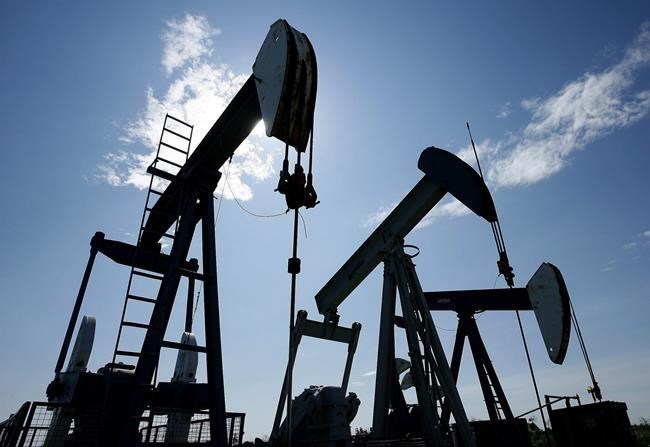CALGARY — After seven years of layoffs and hard times, employers in Alberta's oilpatch are once again flush with cash and out to lure workers from the Maritimes and other parts of Eastern Canada.
The Canadian Association of Energy Contractors (CAOEC) said Tuesday it is expecting 6,457 oil and gas wells to be drilled in 2022, a more than 25 per cent increase from 2021.
“This is the good news story that we’ve been waiting for for seven years," Mark Scholz, CAOEC president and chief executive, told reporters at an industry event in Calgary. "This is the first time in a very, very long time that many of our small businesses — who really quite frankly have been on the edge of insolvency and bankruptcy — (are receiving) that message of hope that many people have been waiting for."
Global prices for natural gas and oil are higher than they've been since 2014, the last boom year for Alberta before a price collapse caused widespread bankruptcies and layoffs in the energy sector and plunged the province into recession.
While drilling activity next year isn't expected to reach 2014 heights, strong commodity prices combined with progress on export capacity projects like the Trans Mountain pipeline expansion and Coastal GasLink means the industry is feeling optimistic for the first time in many years. The CAOEC expects increased drilling activity in 2022 to create 35,000 new jobs in Western Canada, an increase of 7,200 jobs year-over-year.
With that increased activity comes a return to something Alberta has traditionally been good at — recruiting eastern Canadians with the lure of vacant jobs and large paycheques. Scholz said a significant portion of the sector's workforce historically came from Newfoundland, the Maritimes, Ontario and Quebec, but many of those workers returned home in recent years due to a shortage of jobs as well as the impact of the COVID-19 pandemic.
Now, the push is on to get those people back. The CAOEC says a potential skilled labour shortage is the "biggest risk" standing in the way of long-term industry recovery, and Scholz said companies will need to carefully manage their capacity.
"Companies are beginning to reach out to some other jurisdictions, like the Maritimes and Quebec and Ontario, where we have traditionally advertised for skilled labour to come out to Western Canada to work," Scholz said. "We're starting to see that historical outreach ... But there is going to be a lag in our ability to relocate people back."
Scholz said wages in the oilpatch are already up 10 per cent year-over-year, but it will take more than money to lure eastern Canadians back to Alberta. He said many former rig workers are reluctant to return to their old industry until they know the current recovery will be a sustained one.
"It’s just going to take some time to get that confidence back in the workforce," he said.
Long-term, the traditionally 24-hour-a-day, hard-charging oil and gas industry may also have to make some concessions to millennials and members of generation Z, Scholz said.
"What we’re starting to see is a younger workforce that has a value system of greater time off with friends and family and a work-life balance," he said. "I think what we’re starting to see is the workforce is starting to position the industry in a different type of operating fashion than it has in the past.”
Scholz cautioned that while there is optimism in the industry, Alberta's oil and gas sector has undergone a sea change since 2014. After seven years of downturn, the priority for many companies is now paying down debt and fiscal discipline, he said.
“I think we need to temper the expectations of what we have traditionally seen in years past, the oil and gas booms of yesteryear. I think it is a reality that the market, although it is responding to those signals, is going to continue to be very disciplined, very focused and targeted in how that capital is allocated.”
Tim McMillan, president and chief executive of the Canadian Association of Petroleum Producers, said Tuesday he views the latest forecast from the drilling and services sector as "encouraging for everybody."
"We are seeing more activity," McMillan said. "It's potentially less than we would have seen at this point in the cycle eight to 10 years ago, but it gives us a solid platform to build on."
"We might be heading into a period we haven't experienced for some time, which is a labour shortage," said Tristan Goodman, president of the Explorers and Producers Association of Canada. "We're just not sure how that's going to play out, but I see it as a potential issue we may have to address."
This report by The Canadian Press was first published Nov. 23, 2021.
Amanda Stephenson, The Canadian Press



